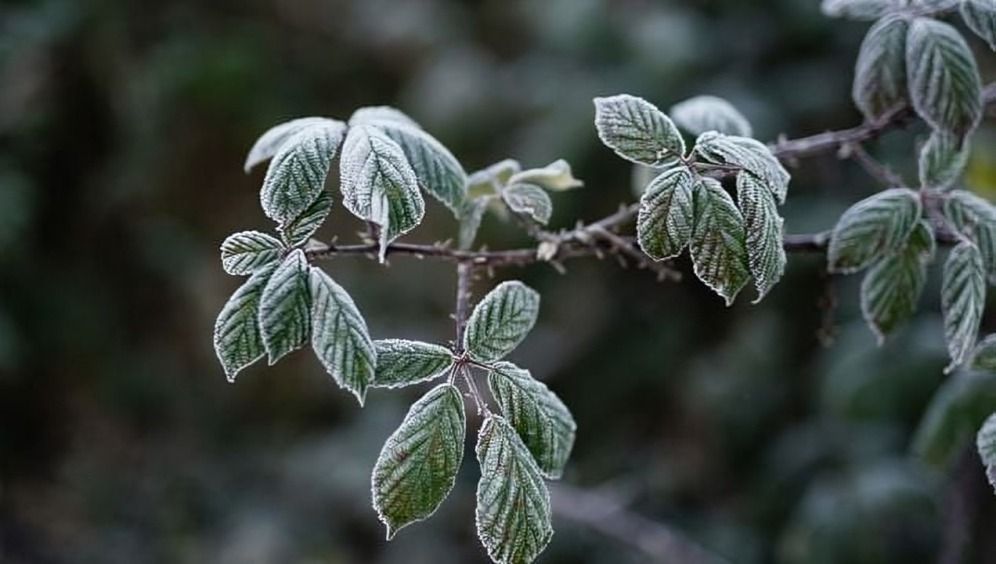
“
Have you ever wondered about those tiny ice pellets that fall from the sky during winter? They're called sleet, and they're more than just frozen raindrops! Discover some fascinating and fun sleet weather facts that will make you see winter weather in a whole new light. From how sleet forms to its impact on daily life, explore the cool world of sleet and its unique characteristics that make each snowy day a little bit special.1
1
”
Sleet forms when snowflakes fall through a layer of warm air, melting partially. As these droplets continue to descend, they pass through a colder layer, refreezing before hitting the ground. This process creates small, round pellets of ice.1
Sleet typically forms when surface temperatures are at or below freezing, usually between 28°F and 32°F (-2°C to 0°C). The warm air above allows for partial melting of snowflakes. When these droplets encounter colder air near the surface, they refreeze into sleet. 2

While both are winter precipitation types, sleet differs significantly from freezing rain. Sleet consists of ice pellets that freeze before hitting the ground, whereas freezing rain freezes upon contact. This distinction impacts road conditions and safety.
Sleet creates a gentle tapping sound as it hits the ground, almost like tiny beads of ice softly pattering against surfaces. This rhythmic sound adds a peaceful background melody to winter days, making it a unique feature of snowy weather. 3
Sleet can create slick and slippery road conditions, but it often provides better traction than freezing rain. The ice pellets can accumulate on surfaces, making driving challenging. However, roads are usually less hazardous compared to those coated in freezing rain. 4
Meteorologists use special tools to measure sleet accurately. These gauges catch the icy pellets as they fall, helping scientists understand how much sleet is falling during a winter weather event. 5
Sleet often falls in conjunction with snow, creating a mix of precipitation. This combination can lead to varied weather conditions, complicating forecasts. The presence of sleet can make snow accumulation less effective for winter sports.6
Significant sleet events have occurred in various regions, impacting transportation and daily life. For instance, a major sleet storm hit parts of the southern United States in 2014, causing widespread disruptions. 7
Sleet can accumulate on surfaces, creating a layer of ice pellets. Accumulation can lead to hazardous conditions for pedestrians and drivers alike. The weight of accumulated sleet can also damage plants and trees. 8
Meteorologists use sleet data to understand winter storm dynamics. Observations of sleet can help improve weather prediction models. The presence of sleet indicates specific atmospheric conditions that are valuable for forecasting. 9

Believe it or not, sleet can protect plants from extreme cold! It forms a cozy layer of ice around leaves and branches, acting like a natural blanket that keeps them safe during freezing weather.
Wildlife often adapts to the presence of sleet in their habitats. Birds may change feeding patterns, seeking shelter during sleet storms. Mammals might adjust their foraging behavior due to slippery conditions. 10
Sleet contributes to the water cycle by returning moisture to the ground as it melts. This can be beneficial for soil moisture levels in the spring. The melting sleet helps replenish groundwater supplies. 11
Research on sleet patterns contributes to climate change studies. Scientists examine changes in sleet frequency and intensity over time. This data helps identify broader climate trends and their impacts. Ongoing studies aim to correlate sleet with global warming indicators. 12
Winter sports enthusiasts face challenges with sleet on the slopes. It can create tricky conditions for skiers and snowboarders, adding an extra layer of excitement and skill to their snowy adventures. 13
Communities often prepare for sleet events by pre-treating roads with salt and sand. Public safety campaigns encourage residents to stay informed about weather conditions. Having emergency kits ready is crucial during winter storms that include sleet. 14
Sleet has made its way into popular culture, often symbolizing winter’s harshness. It appears in literature, songs, and movies as a representation of challenging weather. The imagery of sleet can evoke feelings of isolation or resilience. 15
Meteorologists measure sleet accumulation to provide accurate weather reports. The depth of sleet is often recorded alongside snowfall totals. Understanding sleet amounts helps assess potential hazards. 16
Meteorologists measure sleet accumulation to provide accurate weather reports. The depth of sleet is often recorded alongside snowfall totals. Understanding sleet amounts helps assess potential hazards. 17
Sleet can impact air travel, leading to flight delays and cancellations. Airports often have to adjust operations based on sleet conditions. Ground crews must manage de-icing procedures to ensure safety. 18


